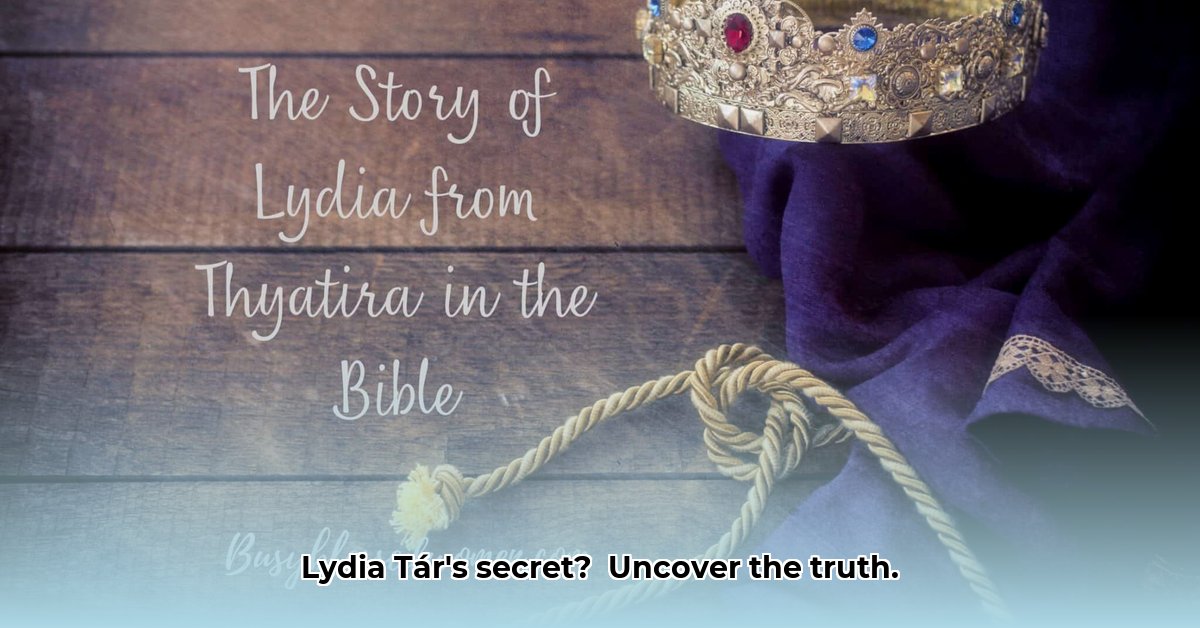
Lydia Tár: Fact, Fiction, and a Conductor's Fall from Grace
So, you’ve seen Tár, hey? That flick starring Cate Blanchett as the brilliant, yet deeply flawed, Lydia Tár. It's got everyone chatting – is it a true story, or just a top-notch piece of movie magic? Let's delve into this fascinating question.
This isn't your average film review; we're going deep, comparing the film to real-life events and personalities in the classical music world. We'll unpack how closely the film mirrors reality, examining both the obvious and subtle hints. We'll also consider the film's broader implications for the future of biographical dramas and its masterful storytelling. Get ready for a proper look at the interplay of fact and fiction in Tár – it's more intricate than you might think!
The film is not a straightforward biography. Instead, think of it as a brilliant reflection of certain aspects of the classical music world. It uses the fictional character of Lydia Tár to explore powerful themes: power, ambition, and the challenges of maintaining success. The film's genius lies in its ambiguity – is it based on a specific person, or a broader commentary on the lives of famous conductors? That's the real meat of the "Lydia Tár true story" debate.
The filmmakers meticulously crafted a realistic orchestral world: the cutthroat competition, the intense pressure, and the complex relationships between musicians. Lydia's personality, her drive, her struggles, even her flaws—they feel incredibly authentic. This authenticity leaves viewers wondering about the filmmakers' sources of inspiration.
Many have pointed out similarities between Lydia Tár and various real-life figures in the classical music world. This is where the mystery truly deepens. While the filmmakers have remained tight-lipped about specific connections, the parallels are too striking to ignore, fueling speculation among film critics and music lovers.
However, Tár is not a documentary. It leverages these real-world echoes to enhance believability and resonance. It takes familiar elements from the classical music world and masterfully weaves them into a gripping fictional narrative. This brilliant blend of fact and imagination makes deciphering the "Lydia Tár true story" so compelling. Isn't that what makes it so captivating?
Lydia Tár is a fascinating character: incredibly talented, yet deeply flawed. Her ambition is immense, and her pursuit of perfection relentless. She grapples with personal and professional relationships, showcasing both brilliance and vulnerability, culminating in a spectacular downfall. This allows the film to explore broader themes about power, the repercussions of "cancel culture," and the potential cost of ambition. But are these observations about specific individuals, or universal truths about human nature? This crucial question fuels the ongoing discussion.
The film brilliantly uses ambiguity, dropping hints and suggestions about real-world events and figures without explicit naming. This approach cleverly encourages audience participation in interpretation. It’s like a Rorschach test for classical music fans—what do you see in the reflections? What conclusions do you draw from the parallels? The interpretations, like the music itself, are remarkably diverse. Isn't that what makes this so engaging? Did you find yourself questioning your own interpretation?
Ultimately, the "Lydia Tár true story" isn’t a simple yes or no answer. It's a sophisticated exploration of real-world themes expressed through fiction. The film's true power lies not in literal accuracy but in its insightful observations on the human condition. It’s a compelling cinematic creation that will continue to spark debate for years to come, partly due to its artful use of ambiguity. It challenges us to think critically, consider different perspectives, and form our own conclusions about the complex relationship between fact and fiction in its narrative. And that, perhaps, is Tár's most enduring legacy. Don't you agree?
Tár's Cinematic Language: A Deeper Dive
The film’s power isn’t solely in Cate Blanchett’s performance; the cinematography plays a crucial role. Consider the long takes, the deliberate framing, the use of light and shadow – these aren’t random choices. They are integral to building Lydia’s character and shaping our perception. How do these visual choices contribute to the overall thematic resonance? This is where the real analysis starts.
The Soundscape of Power and Deception
Sound design is equally crucial in Tár. The meticulously chosen music, subtle sound effects, and even silences—all contribute to the atmosphere and amplify the narrative tension. The carefully curated soundscape is another layer of storytelling technique. The powerful symphony underscores the film’s narrative.
A Multifaceted Approach: Beyond the Surface
A truly insightful analysis goes beyond plot summary. We need diverse perspectives. A feminist lens might explore the portrayal of women in power, their struggles, and societal pressures. A formalist perspective meticulously examines the narrative structure, cinematic techniques, and stylistic choices. Integrating these approaches provides a richer, more nuanced understanding. The film invites multifaceted analysis.